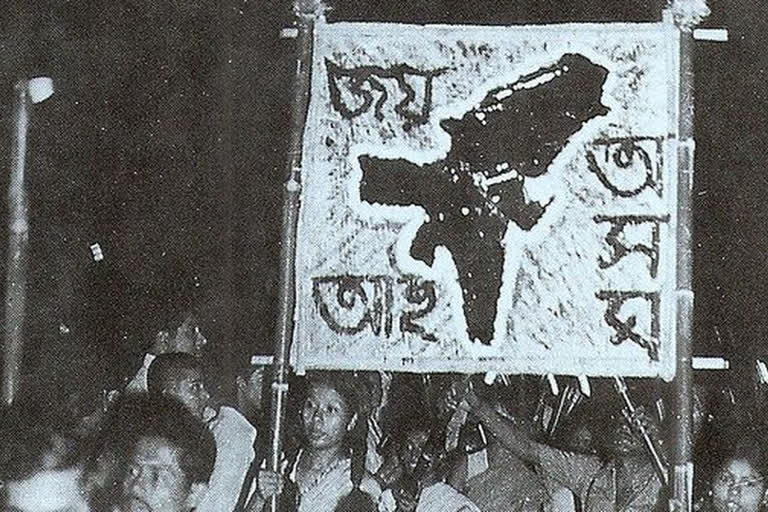Hyderabad: On August 31, 2019, the final National Register of Citizens, updated for the first time since 1951, is scheduled to be published. The register is meant to serve as a definitive and authentic list of Indian citizens in Assam, separating them from undocumented migrants, mostly from believed to be from Bangladesh.
Assam had released the final draft of the NRC on July 30, 2018. Around 28.9 million residents out of the 32.9 million applicants, had made it to the list, while over 4 million people were left out. Out of these 4 million people who did not make it to the final draft NRC, only 2.95 million people filed claims for inclusion in the citizens register until December 31, 2018, which was the last day of filing claims.
This very large number of people now stare at an imminent threat of facing statelessness.
But, what brought Assam to this juncture?
A timeline of events that took place post Independence may provide an answer to this question. How movements of ethnic nationalism in Assam were defined by a fear of the "outsiders".
- July 19, 1948
Until the 'Influx from West Pakistan (Control) Ordinance, 1948' came into force on July 19, 1948, there was no restriction on the movement of people from Pakistan to India or vice versa. Eventually, the Constitution of India formalised this as the cut-off date that entitled the Right to citizenship of certain migrants from Pakistan to India.
- April 8, 1950Indian prime minister Jawaharlal Nehru (left) and Pakistani prime minister Liaquat Ali Khan signing a pact to ensure protection of refugees in 1950 (Photo: Twitter/Moeedi)

The Nehru-Liaquat Pact signed on April 8, 1950, ensured the rights of minorities in both the countries. It said that refugees who returned by December 31, 1950, would be entitled to get back their property, "in respect of migrants from East Bengal, West Bengal, Assam, and Tripura."
- March 1, 1950
Immigrants (Expulsion from Assam) Act came into force giving the Centre the "power to order the expulsion of certain immigrants". Sanjib Baruah, a noted academician writes in his book - India against itself: Assam and the Politics of Nationality- that the Act implied a distinction between "Hindu refugees" and "Muslim illegal aliens".
- 1951
The first Census of Independent India was conducted followed by the first NRC compiled in Assam, which was based on that Census.
- December 30, 1955
The Citizenship Act came into force codifying rules for Indian citizenship by birth, descent and registration.
- 1957
Immigrants (Expulsion from Assam) Act was repealed.
- October 24, 1960
A bill was passed in the Assam legislative assembly to make Assamese the only official language of the state.
- May 19, 1961Procession in Silchar on 20 May 1961 in memory of the deceased martyrs in defiance of the curfew (Wikimedia commons)
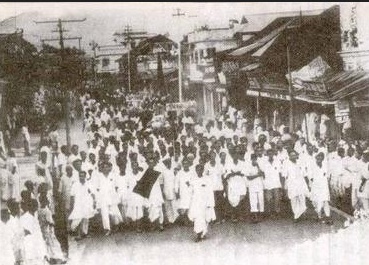
Bengali Language Movement was launched in the Barak Valley of Assam protesting against the imposition of Assamese as the official language.
- 1961-1996
Under the 'Prevention of Infiltration into India of Pakistani Nationals' project, thousands of East Pakistani migrants were forced to leave Assam.
- 1964
Riots in East Pakistan (now Bangladesh) led to an exodus of Bengali Hindus across the border.
- September 23, 1964
The Centre issued the Foreigners' Tribunal Order under the Foreigners' Act, 1946, mandating the setting up of tribunals bestowed with the powers of civil courts and was tasked with identifying foreigners.
- April-September 1965
Indo-Pak war broke out, leading to a further influx of refugees from East Pakistan to India.
- August 8, 1967AASU logo
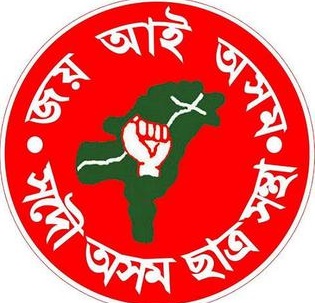
The All Assam Students' Union was formed.
- 1967
The Assam Official Language Act was amended to name Bengali as the official language of three districts from Barak Valley.
- 1971Bangladeshi Refugees migrated to India during the Liberation War of Bangladesh in 1971 (East West University Library)

The Bangladesh liberation war led to a fresh wave of refugees.
- 1978
A bye-poll to the Mangaldoi Parliamentary Constituency showed a surge in population in the voters' list and drew protests building a narrative that illegal immigrants had entered electoral rolls.
- August 26, 1979Assam agitation (Aai Assami : file picture)
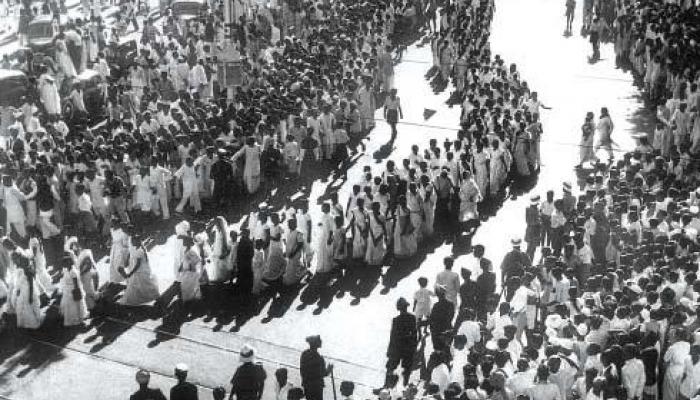
Several political and cultural organisations in Assam led by the All Assam Students Union called for putting off the 1979 Parliamentary election till ‘names of foreigners’ were struck off the electoral rolls. This was the start of a six-year-long Assam agitation or Axom Andolan or Anti-foreigner movement.
- December 1979
Centre rule was imposed for a year and Assam remained under president's rule for the next three years.
- May 1980AAMSU holding a press conference on NRC and Citizenship (Amendment) Bill, 2019
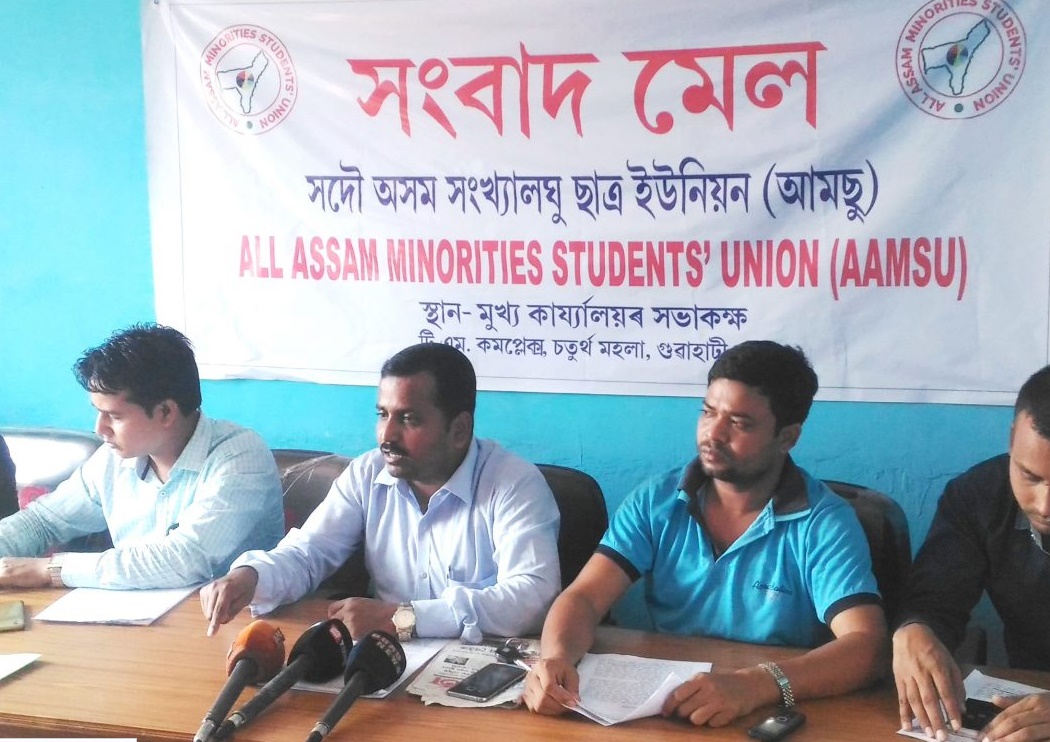
In response to the anti-foreigners agitation, the All Assam Minority Students Union was formed, originally consisting of both Hindus and Muslims.
- 18 February 1983A 1983 paper cutting on a story filed by United Press of India on Nellie massacre
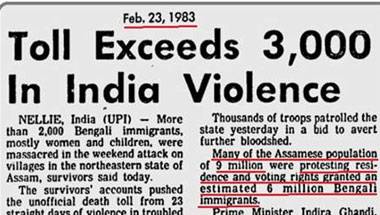
More than 3,000 people mostly belonging to the Bengali Muslim community from 14 villages - including Nellie - of now Nowgong district in central Assam - were massacred in just six hours.
- 1983There was widespread disorder and rioting, state government employees refused to go for polling duties and staffs were flown in by the Indian Air Force (IAF) from other states to conduct the 1983 elections (File image)
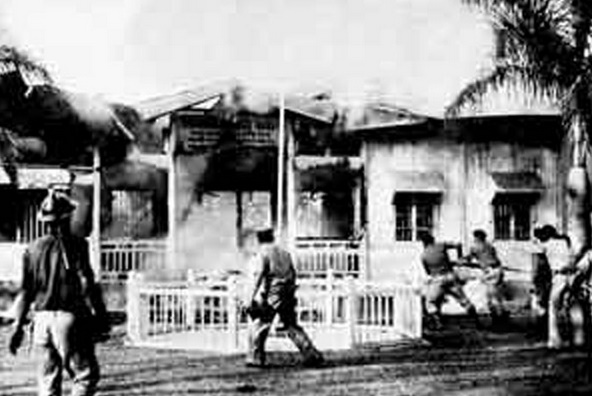
Assembly elections were held, amid boycott calls and protest.
- December 12, 1983
Illegal Migrants (Determination by Tribunals) Act was passed. It specified that those who moved to Assam between 1966 and 1971 would lose their voting rights for 10 years and those who could not prove that they had entered the state before midnight on March 24, 1971, were to be detected, declared foreigners and deported. Under the Act Foreigners Tribunals were also set up to detect and deport "illegal migrants".
- August 15, 1985The Memorandum of Settlement on the Assam problem was signed between Central Government and the leaders of the Assam movement at the residence of Prime Minister of Rajiv Gandhi (Express Archive Photo)
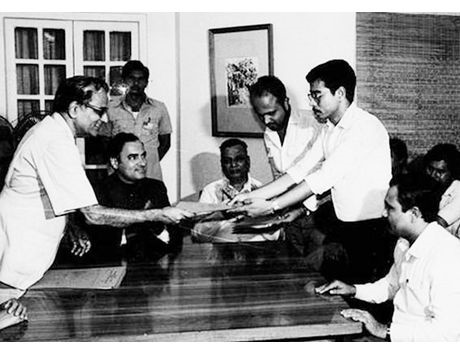
The Assam agitation culminated into the Assam Accord, which was signed between the Centre, the state, the AASU, and other Assamese nationalist groups. Under the Accord and subsequent amendment of the Citizenship Act, foreigners were to be divided into the following categories:
(i) Those who came to Assam before 1.1.1966
(ii) Those who came between 1.1.1966 and 24.3.1971
(iii) Those who came to Assam on or after 25.3.1971
The first category was to be treated as full-fledged citizens; the second to be denied franchise for 10 years and the third group to be deported
- Other clauses of the Accord said:
*Restricting acquisition of immovable property by foreigners
*Registration of births and deaths
*Prevention of encroachment of government lands
*Promoting cultural, social, linguistic identity and heritage of Assamese
*Economic development, stress on education, science and technology
*Citizenship certificates to be issued only by central authorities
*Border security to be ensured
- 1997
The Election Commission, during the revision of its voter rolls, ordered that the letter "D" - standing for "Doubtful" or Dubious" voters- be placed next to the names of 2.3 lakh voters from Assam.
- 2003
The Citizenship (Amendment) Act was introduced. Among other changes that were made to the 1955 law, it said anyone born in India between 1950 and 1987 is an Indian citizen. Those born between 1987 and 2003 is a citizen, provided one of the parents is an Indian citizen. Finally, it said that anyone born in India since 2004 is a citizen of one of the parents is an Indian citizen and the other is not an "illegal immigrant" at the time.
- July 2005
Supreme Court struck down the Illegal Migrants (Determination by Tribunals) Act, 1983, calling it unconstitutional and the "main impediment or barrier in the identification and deportation of illegal migrants".
- July 2009
An Assam-based NGO called Assam Public Works (APW) filed a petition in the Supreme court asking for the deletion of undocumented migrants from the voter rolls and the updating of the citizens' list as part of that process.
- June 2010
A pilot NRC updating project was introduced in two revenue circles but was stalled after protests were held by the All Assam Minority Students' Union.'
- July 2011
Cabinet Sub-committee was formed to work out new modalities concerning NRC
- July 2012
Assam cabinet approves Sub-committee report
- July 2013
Government of Assam submits new modalities to Ministry of Home Affairs
- August 2013
Supreme Court took up the APW petition and began to expedite the counting process for updating the NRC.
- October 2013
Prateek Hajela is appointed as the state coordinator as per the instructions of the Supreme Court
- December 2013
Centre issues gazette notification for updating NRC
- 2014
Supreme Court ordered the setting up of 64 more Foreigners' Tribunals, all governed by the Foreigners Act of 1946, taking the total number up to 100.
- March 2015
Legacy data was published online
- August 2015People queue up at NRC office to get documents checked for inclusion of names
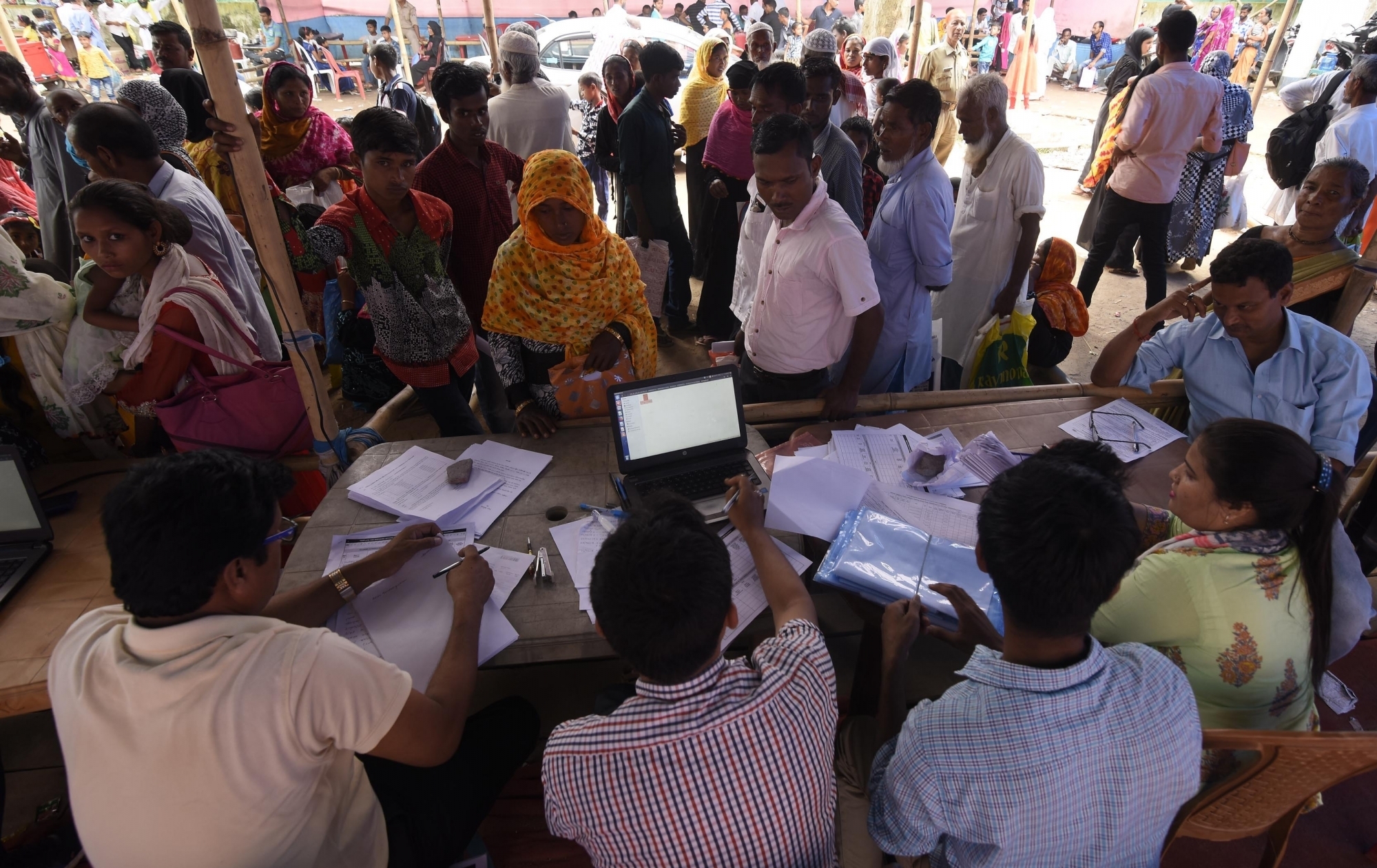
Applications for updating the NRC were invited and the counting, as well as verification exercise, began as per the provisions of the Assam Accord, with the Supreme Court monitoring it.
- July 19, 2016
The Bharatiya Janta Party introduced the Citizenship (Amendment) Bill, which proposed to facilitate citizenship for non-Muslim minorities from Pakistan, Afghanistan, and Bangladesh.
- December 31, 2017
The first draft of the new NRC was published. Only 1.9 crore people out of the 3.29 crore applicants made it to the register.
- May 2018KMSS workers staging a naked protest in Delhi against Citizenship (Amendment) Bill, 2019
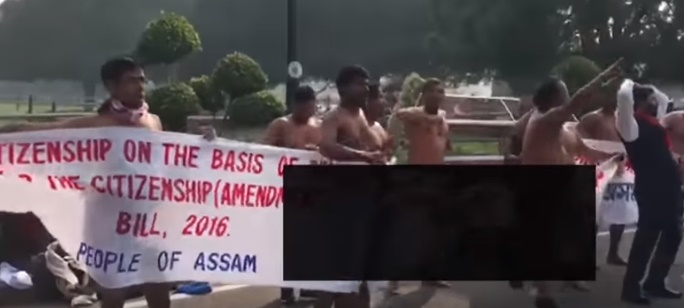
Widespread protests against the Citizenship (Amendment) Bill erupted in Assam. The Joint Parliamentary Committee on the Bill was on a visit to the state.
- July 30, 2018
The final draft NRC was published, including 2.89 crore names and leaving out 40 lakh.
- January 8, 2019Former Home Minister Rajnath Singh introducing the Citizenship (Amendment) Bill, 2019 in Lok Sabha

Citizenship (Amendment) Bill 2019 was tabled and passed in the Lok Sabha.
- June 21, 2019
APW moved the Supreme Court seeking 100 percent re-verification of names included in the final draft of the NRC, following the arrest of two officials engaged in the update for demanding a bribe for including a woman’s name.
- June 26, 2019
An additional draft exclusion list of the NRC was published further excluding 1, 02, 462 people, who had earlier made it to the draft published on July 30, 2018, but were subsequently found ineligible for inclusion.
- July 19, 2019
Both Attorney General KK Venugopal for the Centre and Solicitor General Tushar Mehta for the Assam government filed a plea in the Supreme Court demanding a sample re-verification of the draft National Register of Citizens (NRC) list as the exclusion percentage in the entire state stood at 12.7%, in the border areas, it was just 7.7%, giving rise to apprehensions that some scurrilous activity could have occurred in the rollout of NRC.
- July 22, 2019
Supreme Court rejected the plea filed by the Centre and Assam government demanding sample re-verification but granted a one-month extension - up to August 31, 2019- to the state NRC coordinator for publishing the final NRC. The SC cited NRC coordinator Hajela’s report on the re-verification exercise carried out so far, which said 8 million people have been automatically re-verified so far.
- August 13, 2019
The Supreme Court rejected the Centre's plea for further extension of the deadline to publish NRC from August 31 and directed the government to publish the final list of exclusion only on online platforms. The court agreed with the suggestion made by Mr. Hajela in his July report that people born before December 3, 2004, may be included in the NRC if the parent through whom legacy is drawn is not a declared foreigner (DF) or D Voter (DV) or whose case of nationality is pending before a foreigner tribunal (PFT). Such persons can be included in the NRC even if the other parent is a DF or PFT.
